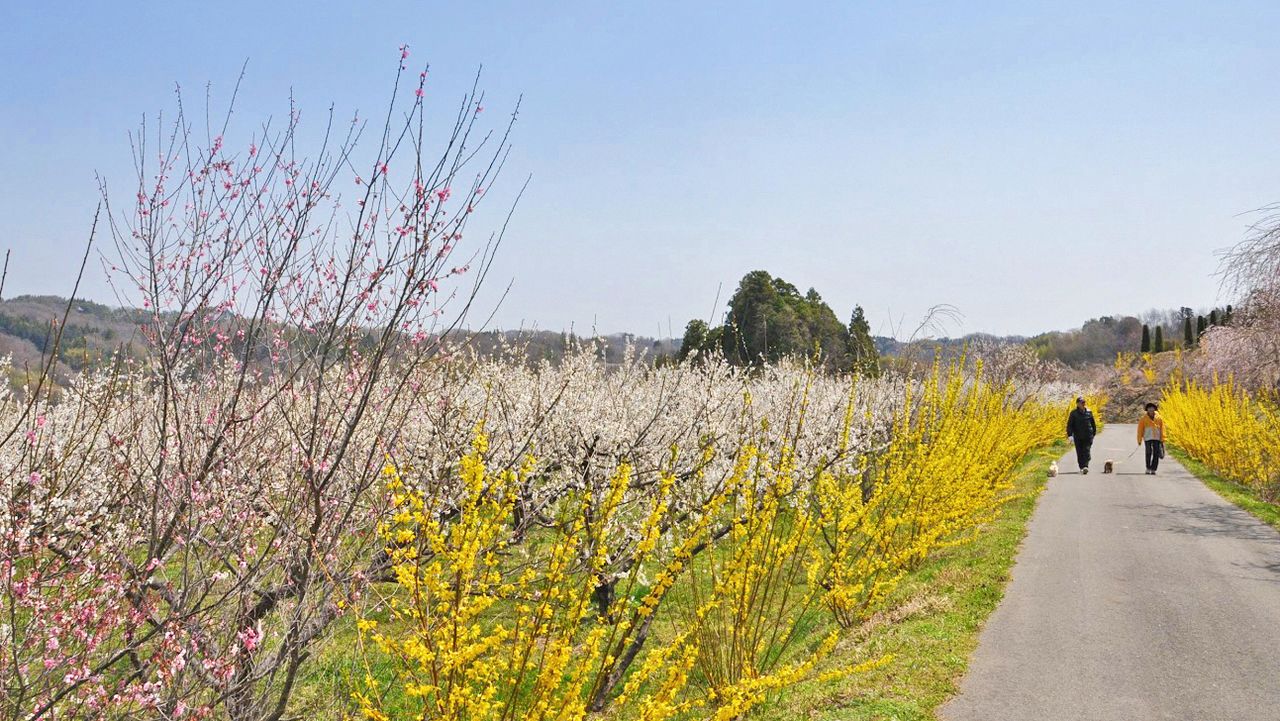
Plum Blossoms Herald the Coming of Spring in Tōhoku
Guideto Japan
Travel- English
- 日本語
- 简体字
- 繁體字
- Français
- Español
- العربية
- Русский
Matsushima, Miyagi Prefecture
Zuiganji Garyūbai plum trees
Best viewing: early to mid-April
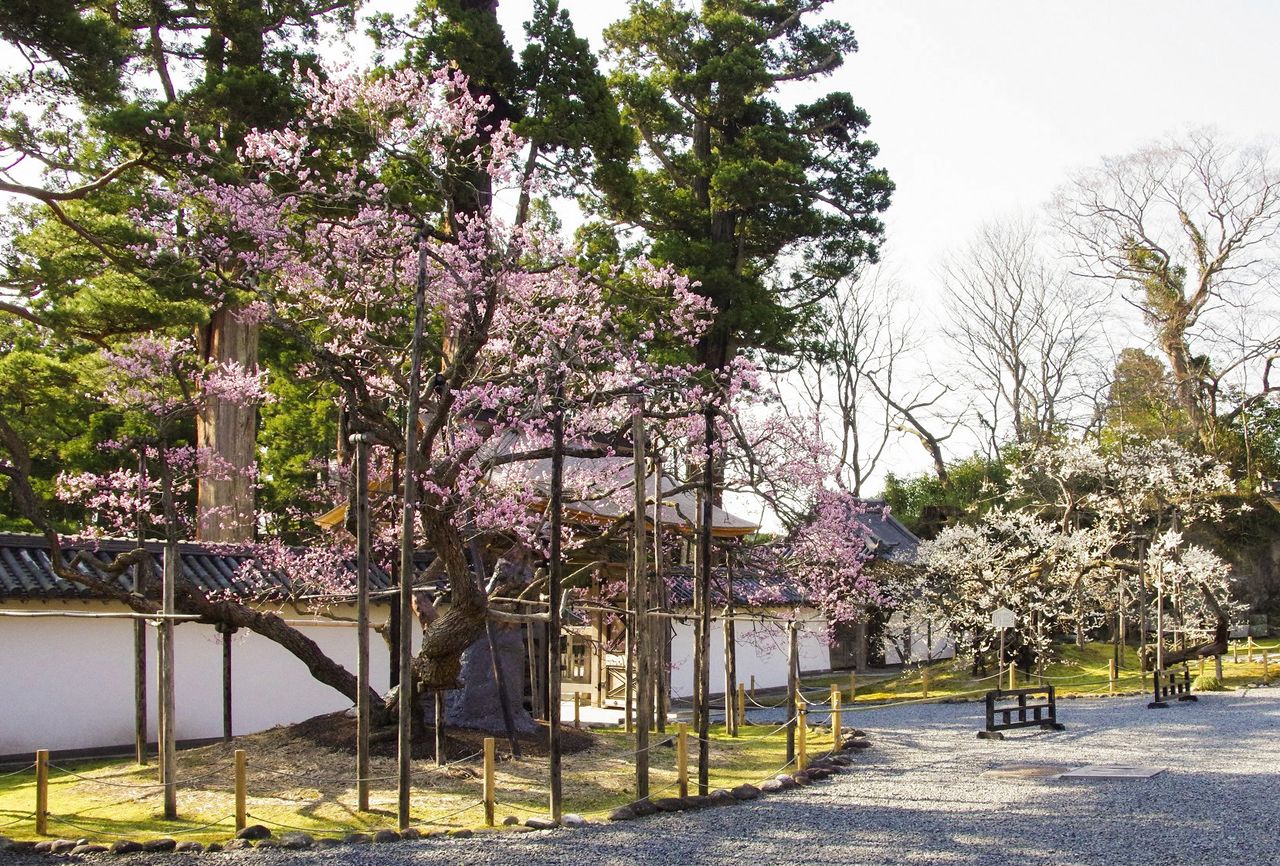
The ancient Garyūbai plum trees add splashes of pink and white to the temple’s front garden. (Photo courtesy of Zuiganji)
The temple Zuiganji in Matsushima, Miyagi Prefecture, was founded in 828 by the priest Jikaku Taishi (Ennin) and rebuilt in 1609 by Date Masamune, lord of the Sendai domain. The two ancient Garyūbai plum trees located in the temple’s front garden are said to have been brought as saplings from Korea by Masamune when he returned from the 1592 invasion of the Korean peninsula. Legend has it that he planted them there with his own hands to commemorate the reconstruction of the temple. Viewed from the temple hondō, or main building, the tree on the left is a red plum standing 8 meters high and that on the right is a white plum, 6 meters in height. Both trees have been designated as prefectural natural monuments.
The name Garyūbai refers to the gnarled trees’ resemblance to a low-crawling dragon. The powerful trees, vibrant with life, seem to vie with each other as their pink and white buds burst into bloom. Visitors are sure to enjoy the delicate fragrance of the blossoms wafting through the temple garden as they view these magnificent specimens.
Tsuruoka, Yamagata Prefecture
Yutagawa Onsen Plum Park
Best viewing: late March to late April
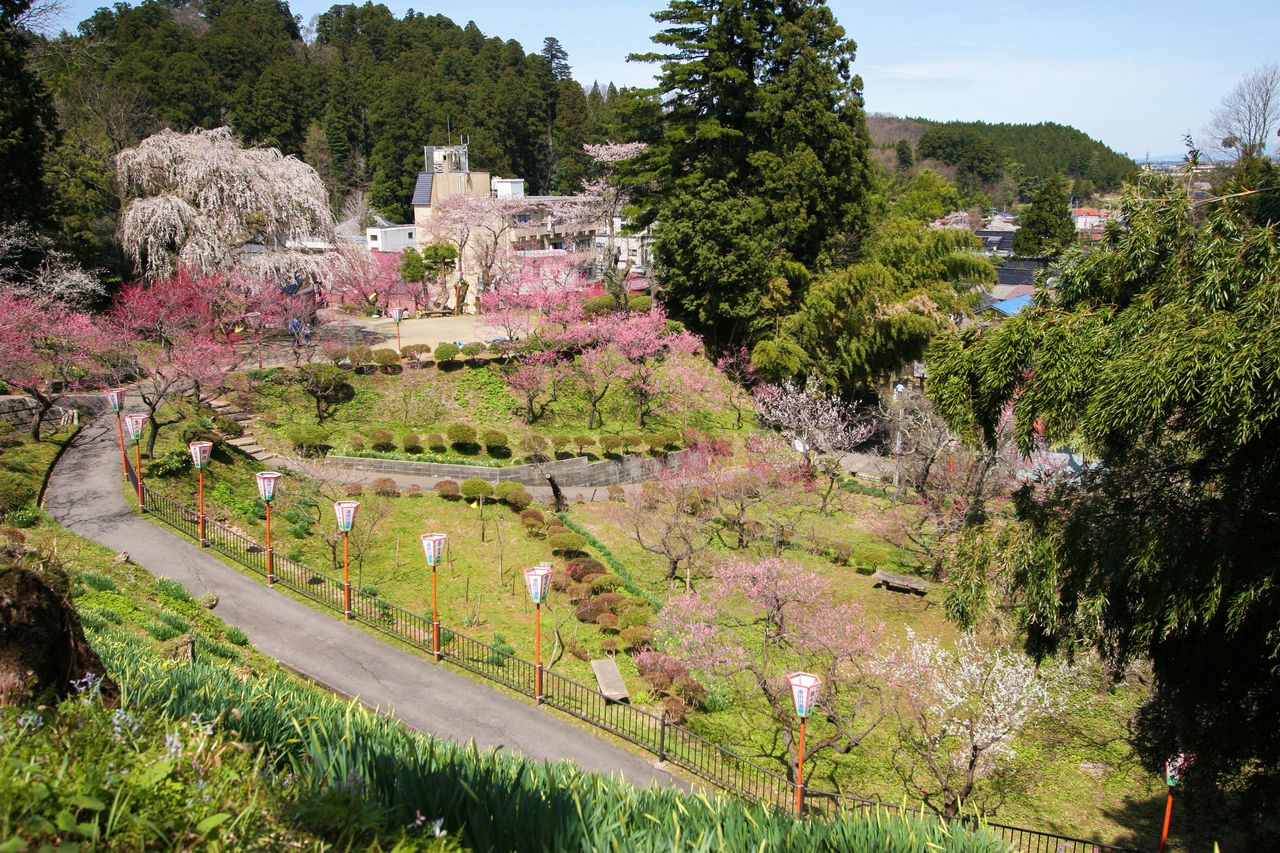
A profusion of pink and white blossoms adorn the park situated above the hot springs town. (Photo courtesy of the Yutagawa Onsen Tourist Association)
The Yutagawa hot springs have a history spanning some 1,300 years. In the Edo period (1603–1868), Yutagawa was where the lords of the Shōnai domain, also known as Tsuruoka, went to luxuriate in the curative baths. The Yutagawa Onsen Plum Park above the little town is one of the major plum blossom viewing spots in Yamagata Prefecture. Surrounded by a ring of bamboo groves, nearly 300 plum trees paint the park in swaths of pink and white blossoms.
A plum festival takes place in the park at the height of the season each year. Visitors can sip tea served by the women proprietors of the local inns in tea ceremonies under the blossoming trees and watch performances of traditional Yutagawa Onsen Kagura dance. This year, the festival will be held on April 6 and 7. After strolling through the park and enjoying your tea, you may want to go down into the town for a refreshing bath in the hot springs before making your way home.
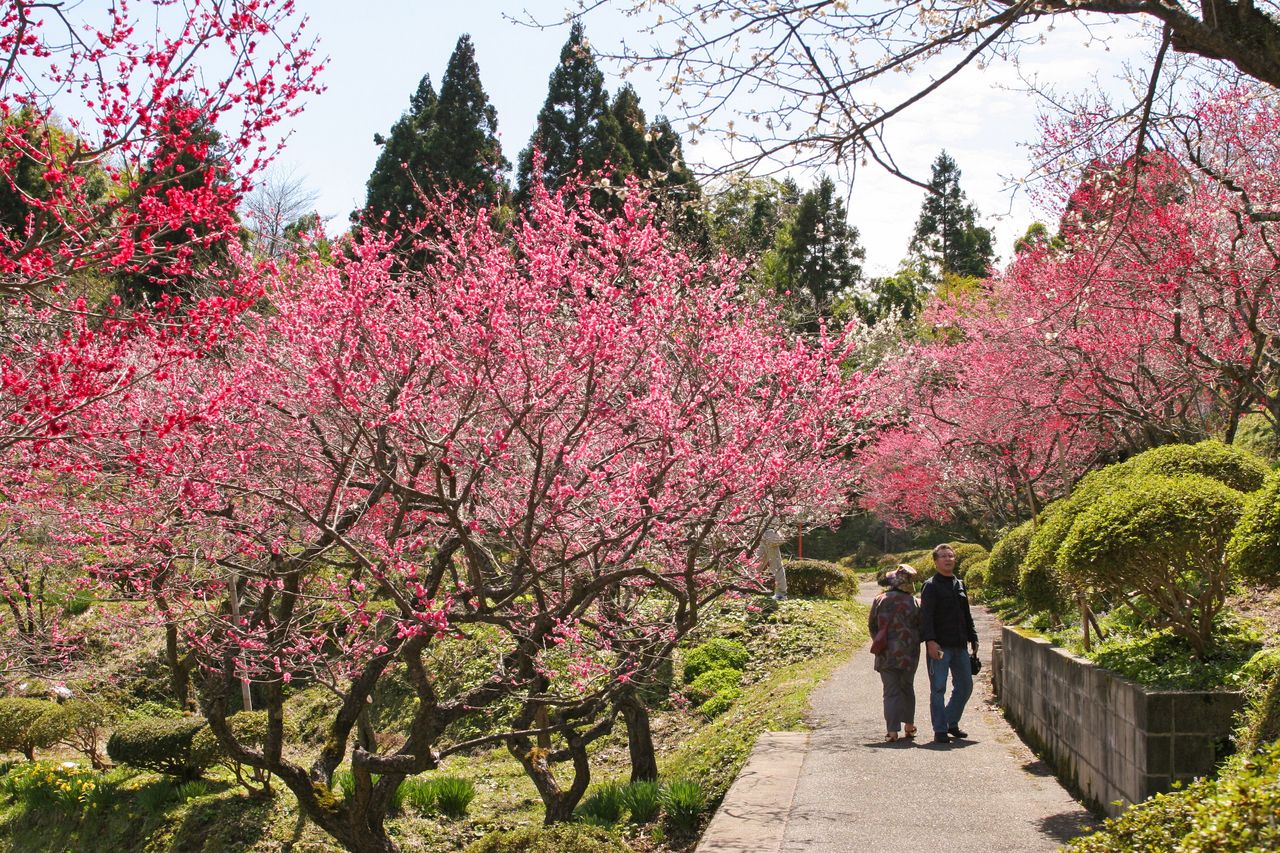
A hot-spring dip is recommended after enjoying the glory of the plum blossoms. (Photo courtesy of the Yutagawa Onsen Tourist Association)
Kōriyama, Fukushima Prefecture
Nishidamachi Umenosato Plum Road
Best viewing: mid-April
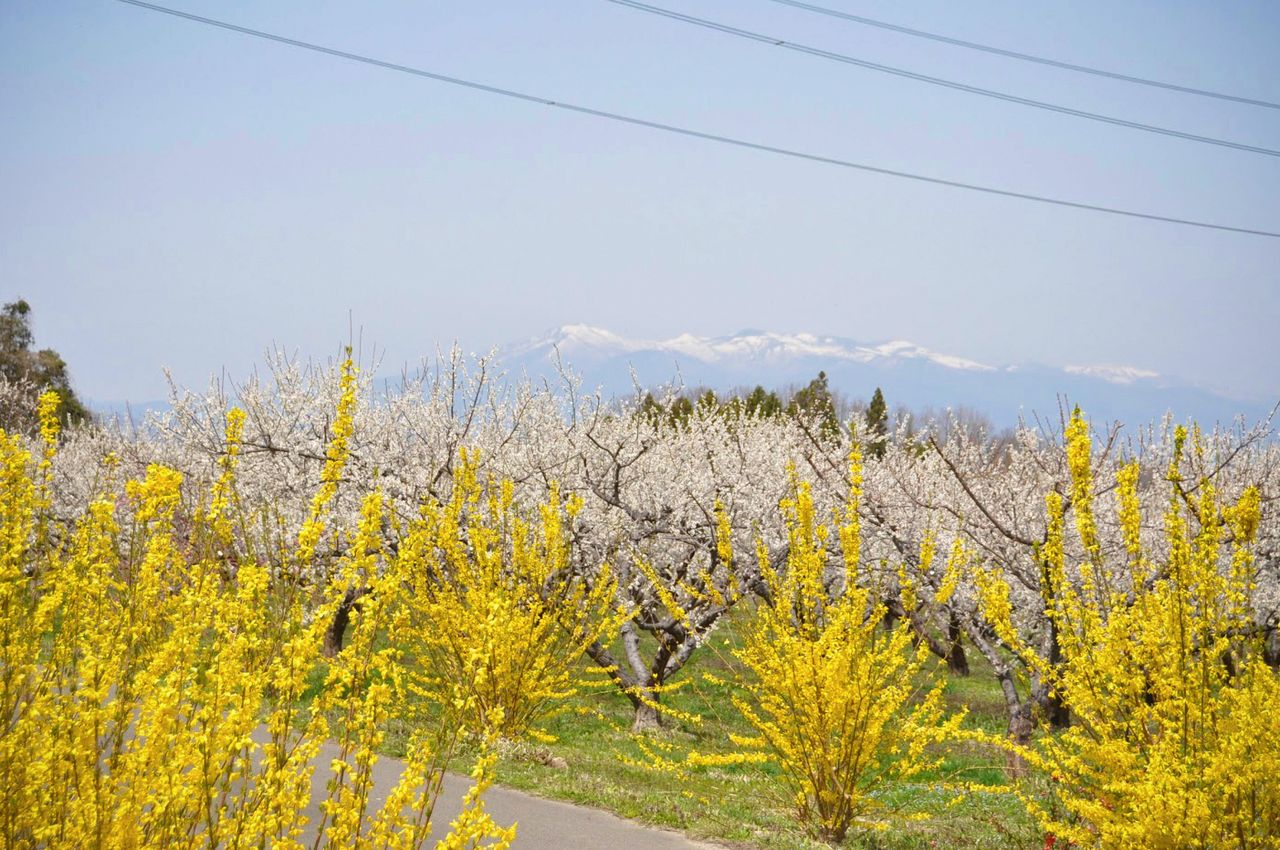
A profusion of white plum blossoms highlighted by bright yellow forsythia. (Photo courtesy of the Kōriyama City Tourist Association)
Residents of the Nishida district in Kōriyama, Fukushima Prefecture, have been planting plum trees for the past three decades as part of a campaign to beautify the city. The now-famous Plum Road is lined with nearly 12,000 plum trees. In spring, their delicate pink and white blossoms are a pleasing sight against the backdrop of snow-capped Mount Adatara. The combination of the pink and white plum blossoms and the bright yellow of the forsythia and canola that bloom at the same time transforms the area into a beautiful Shangri-La. Also to be enjoyed is the occasional birdsong of the bush warbler.
At the height of the plum blossom season, visitors flock to the area to enjoy the Umenosato Festival. This year the festival is scheduled to be held on April 7. Stalls line the road selling locally produced pickled plums and plum juice. One highlight of the festival is a plum-seed spitting contest.
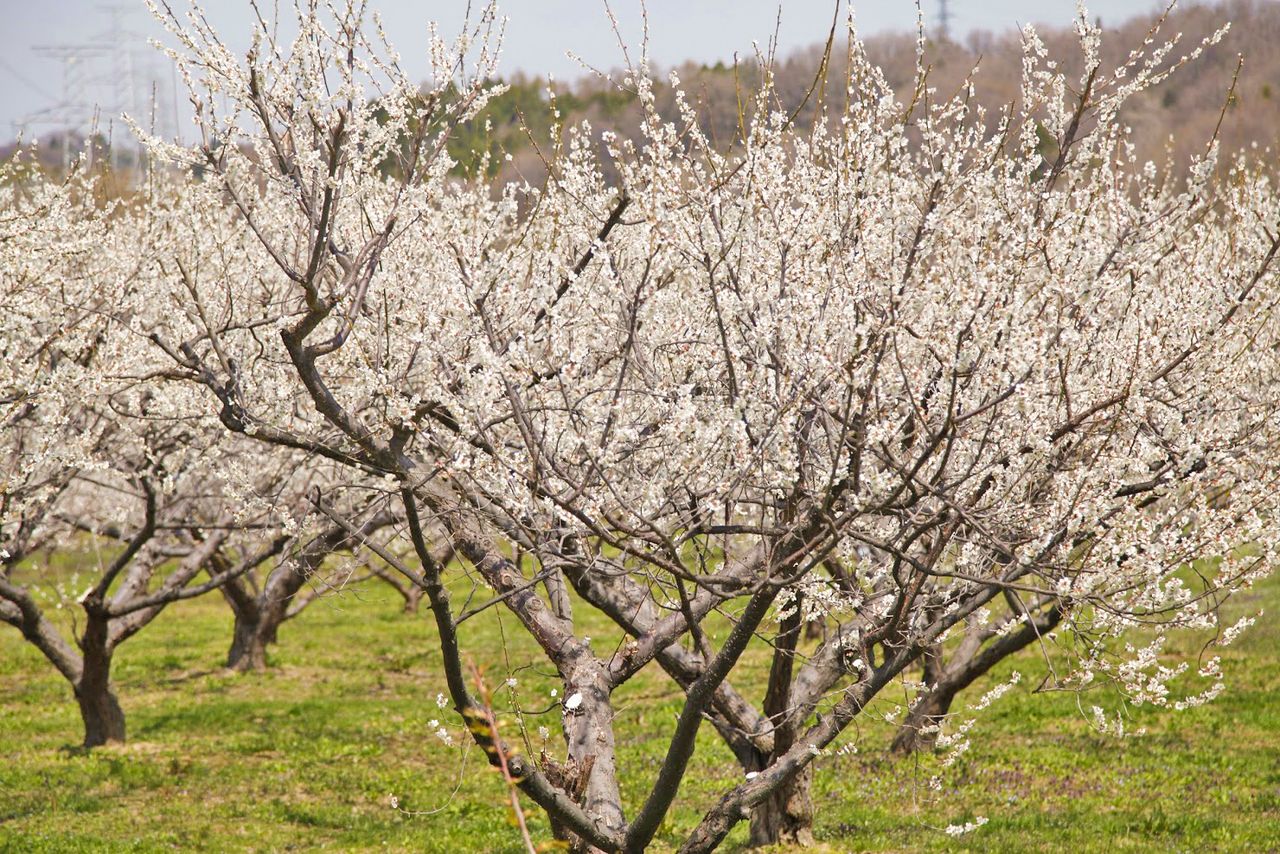
Nearly 12,000 plum trees line the Plum Road. (Photo courtesy of the Kōriyama City Tourist Association)
Note: Best viewing dates may vary due to weather. Checking before you go is recommended.
(Reporting and text by Shoepress. Banner photo: Enjoying the blossoming plums and forsythia of Plum Road. Photo courtesy of Kōriyama Tourist Association.)
tourism Tōhoku Fukushima Miyagi Matsushima Yamagata Tsuruoka Miyagi Prefecture flower ume Kōriyama